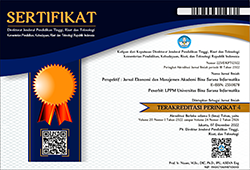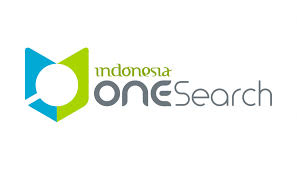The Nexus of Gender Inequality and Poverty Rate in Indonesia
Abstract
The phenomenon of feminization of poverty intertwines issues of poverty and gender as interconnected challenges. This research aims to elucidate the intricate relationship between gender inequality and the poverty rate in Indonesia, utilizing panel data from 34 provinces during 2018 to 2022. Multiple linear regression modeling is used to analyze the impact of independent variables comprising the Gender Inequality Index (GII), Gender Development Index (GDI), Gender Empowerment Index (GEI), dependency ratio, and Gini ratio on the poverty rate. The findings reveal that GII, GEI, dependency ratio, and Gini ratio significantly positively affect the poverty rate, while GDI significantly negatively affects the poverty rate. Consequently, comprehensive and gender-aware policies are essential to alleviate gender inequality and poverty issues.
References
Abdillah, K., & Mursinto, D. (2016). The Effects of Fiscal Decentralization, Economic Growth and Income Equality on Poverty Rate of Indonesia’s 33 Provinces. International Journal of Advanced Research, 4(2), 405–414. http://www.journalijar.com
Abdullah, M. (2015). Metodologi Penelitian Kuantitatif. Aswaja Pressindo.
Adnan, G., & Amri, K. (2021). Do Gender Empowerment and Democracy Reduce Poverty Rate? A Cross-Provinces Evidence From Western Indonesia. INterdisciplinary Approach to Economics and Sociology, 14(3), 54–71. https://doi.org/10.14254/2071
Ali, M., Tariq, M., & Khan, M. A. (2022). Economic Growth, Financial Development, Income Inequality and Poverty Relationship: An Empirical Assessment for Developing Countries. IRASD Journal of Economics, 4(1), 14–24. https://doi.org/10.52131/joe.2022.0401.0057
Alisjahbana, A., & Pitriyan, P. (2016). Lessons from Effective Poverty Alleviation in Indonesia: the Role of Women Empowerment and Community Participation. Working Papers in Economics and Development Studies (WoPEDS).
Anggraini, C. D., & Faridatussalam, S. R. (2024). The Effect of the Determinants of Gender Empowerment Index on Economic Growth in West Nusa Tenggara Period 2018–2021 (pp. 848–858). https://doi.org/10.2991/978-94-6463-204-0_70
Angraini, S., Bungsu, A. P., Nurhayati, Lukitasari, I., Bodromurti, W., & Surida, D. (2022). Pembangunan Manusia Berbasis Gender (S. Angraini, A. P. Bungsi, & Nurhayati, Eds.). KemenPPPA.
Aprilia, V., & Triani, M. (2022). Analisis Pengaruh Ketimpangan Gender, Rasio Ketergantungan Dan Kesehatan Terhadap Kemiskinan di Indonesia. Jurnal Kajian Ekonomi Dan Pembangunan, 4(3), 43–50.
Atmojo, D. (2017). Analisis Pengaruh Gini Ratio, Indeks Pembangunan Manusia (IPM), dan Jumlah Penduduk terhadap Tingkat Kemiskinan di Provinsi Jawa Barat Tahun 2012-2016. Universitas Muhammadiyah Yogyakarta. http://repository.umy.ac.id/handle/123456789/17236
Badan Pusat Statistik. (2023a). Profil Kemiskinan di Indonesia Maret 2023.
Badan Pusat Statistik. (2023b). Gender dan Kelompok Populasi Khusus. Gender dan Kelompok Populasi Khusus K
Baltagi, B. H. (2005). Econometric Analysis of Panel Data Third Edition (3rd ed.). John Wiley & Sons Ltd.
Bradshaw, S., Chant, S., & Linneker, B. (2017). Gender and poverty: what we know, don’t know, and need to know for Agenda 2030. Gender, Place & Culture, 24(12), 1667–1688. https://doi.org/10.1080/0966369X.2017.1395821
Buvinic, M., Das Gupta, M., & Casabonne, U. (2009). Gender, Poverty and Demography: An Overview. The World Bank Economic Review, 23(3), 347–369. https://doi.org/10.1093/wber/lhp013
Chant, S. (2014). Exploring the “feminisation of poverty” in relation to women’s work and home-based enterprise in slums of the Global South. International Journal of Gender and Entrepreneurship, 6(3), 296–316. https://doi.org/10.1108/IJGE-09-2012-0035
Direja, S., & Paramitasari, N. (2022). Pengaruh Ketidaksetaraan Gender pada Pendidikan terhadap Kemiskinan di Provinsi Banten. Jurnal Ilmiah Ekonomi Bisnis, 27(1), 58–70. https://doi.org/10.35760/eb.2022.v27i1.5063
EU Parliamentary Assembly. (2007). The Feminisation of Poverty. https://assembly.coe.int/nw/xml/XRef/Xref-XML2HTML-EN.asp?fileid=17555〈=EN
Firdaus, A., Dawood, T. C., & Abrar, M. (2021). Determinants of Poverty in Indonesia: An Empirical Evidence using Panel Data Regression. International Journal of Global Operations Research, 2(4), 124–132. http://www.iorajournal.org/index.php/ijgor/index
Gerecke, M. (2013). A policy mix for gender equality? Lessons from high-income countries. https://www.files.ethz.ch/isn/167482/wcms_206235.pdf
Gökovalı, U., & Danışman, A. (2010). Feminization of poverty: Does it really exist in Turkey? New Perspectives on Turkey, 42, 179–201. https://doi.org/10.1017/S0896634600005628
Greene, W. H. (2018). Econometric Analysis (8th ed.). Pearson.
Gujarati, D. N. (2004). Basic Econometrics. The McGraw−Hill Companies.
Nurrizqi, A. I., Erfiani, Indahwati, Fitrianto, A., & Amelia, R. (2022). Pemodelan Regresi Logistik Berbasis Backward Elimination Untuk Mengetahui Faktor yang Memengaruhi Tingkat Kemiskinan di Indonesia Tahun 2021. Jurnal Statistika Dan Aplikasinya, 6(2), 160–170.
Junaidi, Rohana, & Hari, P. P. (2017). Analisis Pengaruh Pertumbuhan Penduduk dan Rasio Ketergantungan Terhadap Kemiskinan di Kabupaten Sarolangun. Jurnal Ekonomi Sumberdaya Dan Lingkungan, 6(2), 69–79.
Lakner, C., Mahler, D. G., Negre, M., & Prydz, E. B. (2022). How much does reducing inequality matter for global poverty? Journal of Economic Inequality, 559–585. https://doi.org/10.1007/s10888-021-09510-w
Maulana, M. A., Julia, A., & Mafruhat, A. Y. (2022). Pengaruh Indeks Pendidikan, Gini Rasio, Jumlah Penduduk, dan Pendapatan Perkapita terhadap Tingkat Kemiskinan di Enam Provinsi Indonesia Tahun 2015-2019. Bandung Conference Series: Economics Studies, 2(1). https://doi.org/10.29313/bcses.v2i1.300
McLanahan, S. S., & Carlson, M. J. (2001). Poverty and Gender in Affluent Nations. In International Encyclopedia of the Social & Behavioral Sciences (pp. 11894–11900). Elsevier. https://doi.org/10.1016/B0-08-043076-7/03983-8
Nathan, D., Kelkar, G., & Govindnathan, P. (2022). Knowledge economy and gender inequality. Gender, Technology and Development, 26(3), 341–356. https://doi.org/10.1080/09718524.2022.2127065
Naufal, A., & Fikriah, F. (2023). Regional Nexus of Economic Growth, Income Inequality and Poverty. Ekonomikalia Journal of Economics, 1(2), 61–68. https://doi.org/10.60084/eje.v1i2.114
Nisak, S. S., & Sugiharti, L. (2020). Gender Inequality and Women Poverty in Indonesia. International Journal of Innovation, Creativity and Chang, 11(9).
Nurhidayati, Purwanti, D., Budiantono, S., Robinson Sihombing, P., & Marsinta Arsani, A. (2023). Endogenous Modeling of the Effect of Gender Development on Poverty in Indonesia in 2021. Jurnal Ekonomi & Manajemen Universitas Bina Sarana Informatika, 21(2). https://doi.org/10.31294/jp.v21i2
Pardhan, M. (2018). Gender Development and Poverty in Indonesia. Jurnal Ekonomi Dan Studi Pembangunan, 19(2), 115–130.
Rietveld, C. A., & Patel, P. C. (2022). Gender inequality and the entrepreneurial gender gap: Evidence from 97 countries (2006–2017). Journal of Evolutionary Economics, 32(4), 1205–1229. https://doi.org/10.1007/s00191-022-00780-9
Rokhmansyah, A. (2016). Pengantar Gender dan Feminisme: Pemahaman Awal Kritik Sastra Feminisme. Penerbit Garudhawaca.
Saputri, A., Siti Badriah, L., & Supriadi, D. (2023). The Effect of GRDP, Education, and Gender Empowerment Index on Poverty. Jurnal Ekonomi Dan Bisnis, 26(2), 373–392. www.ejournal.uksw.edu/jeb
Seguino, S. (2008). Micro-macro linkages between gender, development, and growth: Implications for the Caribbean Region. Journal of Eastern Caribbean Studies, 33(4), 8–42.
Septiadi, M., & Wigna, W. (2013). Pengaruh Ketimpangan Gender terhadap Strategi Bertahan Hidup Rumah Tangga Buruh Tani Miskin di Desa Cikarawang. Jurnal Sosiologi Pedesaan, 1(2), 100–111.
Sihombing, P. R. (2021). Corat Coret Catatan Statistisi Pemula. Yayasan Sahabat Alam Rafflesia.
Todaro, M. P., & Smith, S. C. (2020). Economic Development (13th ed.). Pearson.
UNDP. (2023). Human Development Report 2021/2022: Uncertain Times, Unsettled Lives: Shaping Our Future in a Transforming World.
Vijayakumar, S. (2013). An Empirical Study on the Nexus of Poverty, GDP Growth, Dependency Ratio and Employment in Developing Countries. Journal of Competitiveness, 5(2), 67–82. https://doi.org/10.7441/joc.2013.02.05
Wagle, U. R. (2010). Does Low Inequality Cause Low Poverty? Evidence from High-Income and Developing Countries. Poverty and Public Policy, 2(3), 29–52. https://doi.org/10.2202/1944-2858.1076
Wintara, H., Masbar, R., & Suriani. (2021). Determinants of Socio Economic and Demographic Characteristics of Poverty in Aceh Province. International Journal of Business, Economics and Social Development, 2(2), 50–56. https://journal.rescollacomm.com/index.php/ijbesd/index
World Bank. (2020). Indonesia Country Gender Assessment: Investing in Opportunities for Women. www.worldbank.org
World Bank. (2022, March 1). Nearly 2.4 Billion Women Globally Don’t Have Same Economic Rights as Men. https://www.worldbank.org/en/news/press-release/2022/03/01/nearly-2-4-billion-women-globally-don-t-have-same-economic-rights-as-men
DOI: https://doi.org/10.31294/jp.v22i1.21218
Copyright (c) 2024 Fadhal Muhammad

This work is licensed under a Creative Commons Attribution-ShareAlike 4.0 International License.
dipublikasikan oleh LPPM Universitas Bina Sarana Informatika Jakarta
Jl. Kramat Raya No.98, Kwitang, Kec. Senen, Kota Jakarta Pusat, DKI Jakarta 10450

This work is licensed under a Creative Commons Attribution-ShareAlike 4.0 International License









